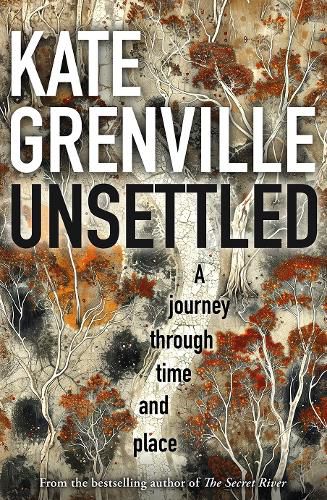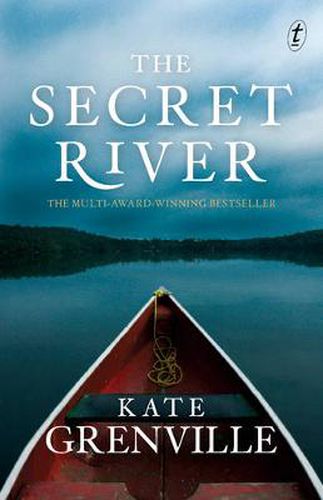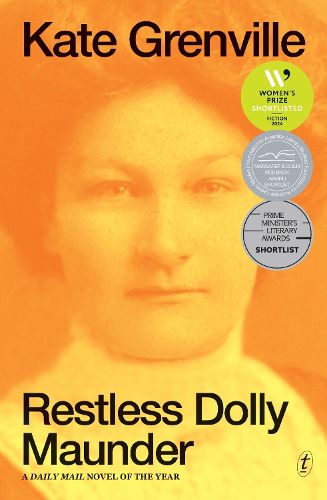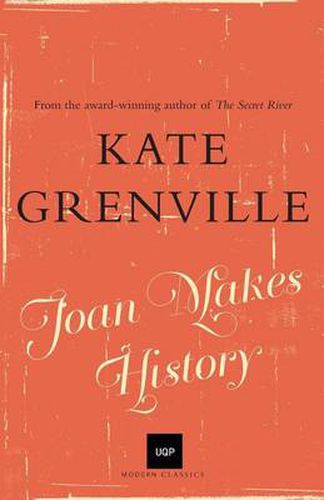I read Kate Grenville because she writes about hidden Australian history.
I fell in love with her smooth pragmatic writing when I was a teenager and was gifted two books from my history teacher: Anne Summers' Damned Whores and God's Police and Grenville’s Lilian’s Story. What a combination: it blew my world apart. On one hand was Summer’s account of the very reasons why women’s lives had been dismissed, and then like a burst of fresh air was Grenville’s story of a woman doing very nicely, by not following a man-made trail of expectations.
I have read every Grenville novel since, because I trust her to be on the side of women. Grenville’s work showed me how women have always twisted and turned to make sense of their own domain; or more bluntly, how women have dodged around the ridiculousness of men to make their own mark. And by that, I simply mean: Grenville’s take on history made sense to me. She made it all come alive in my head. She made me part of it all.
Which Grenville book to read first?
All up Grenville has written twenty books: fiction, memoirs, and some manuals on how to write and research; she has even written a science book about perfume. So where do you start reading, if you were not given a book by her at the very impressionable age of 16 years old?
My advice would be to start, not at the beginning but at the end. Reach for her latest offering because in these pages you will begin to understand the way she thinks. Like her grandmother (who we met in her recent book, Restless Dolly Maunder). Grenville does not rest. She keeps looking for answers – spaces if you like, in our history.
Start here:
Unsettled: A Journey Through Time and Place
In Unsettled, Grenville asks us all:
‘What does it mean to be on land that was taken from other people? Now that we know how the taking was done, what do we do with that knowledge?’
Following the (heartbreaking) defeat of the Voice referendum, Grenville decides to go on a kind of pilgrimage, back through the places her family stories happened, and put those stories and the First People together. The result, with her astute navigation of complicity, is a powerful, needed reckoning for everyone in Australia.
Read it and then gift it to a wide-eyed teenager who is searching for understanding of how our country became the way it is.
Next step on the Grenville reading list:
The Secret River
If you’re the only person left in Australia that has not read The Secret River, you must immediately, otherwise how will you make a comment at the next dinner party on Grenville’s literary and historical influence on Australia?
The Secret River is set in the early nineteenth century, on what was then the frontier between British colonists and Australia’s Indigenous people. Shortlisted for the Miles Franklin, the Booker Prize and the Victorian Premier's Literary Award, The Secret River was both applauded and controversial when it was first published in 2005, partly because it asked readers to consider how Australia tells its foundation story. And Grenville made the story personal, because this is the history of Grenville’s family.
Follow up with:
Sarah Thornhill, Restless Dolly Maunder and Searching for the Secret River
Her follow-up novel, Sarah Thornhill, extends the story into the next generation; this is the story of the youngest child of the family at the heart of The Secret River.
Then, continue your journey through Grenville's family history with Restless Dolly Maunder, the story of her bold and pioneering grandmother.
From there, you will want to know how Grenville found these stories. Move to Searching for the Secret River. It shows the research behind her most famous novel, from the transcript of Grenville’s convict ancestor’s trial in 1805, to the facts about violence on the Australian frontier. It divulges the lengthy process of using that research as the basis for a novel.
Then, the early works of Grenville:
Joan Makes History and Lilian’s Story
Are you someone that has read A Room Made of Leaves for book group but are unaware of Grenville's early works? This is a shame that can be fixed! I highly recommend you read Joan Makes History.
This is the story of an “everywoman,” Joan, who was present at all the famous moments of Australia’s European history. She gives her irreverent version of what went on, filling in the blanks that more solemn historians leave. Joan “makes” history because she was there too, but she has some helpful considerations for the reader. It is a delight to read: quirky, informative, and funny.
And now back to me. Read Lilian’s Story next. It is the story of Lilian Singer, a larger-than-life personality – shameless and unflinching. It finishes with these excellent words:
'Drive on, I told George. He heard the tears in my voice and turned to stare, but I was impatient with the curiosity of the living now….'
'The curiosity of living now' – Grenville, in a nutshell.






